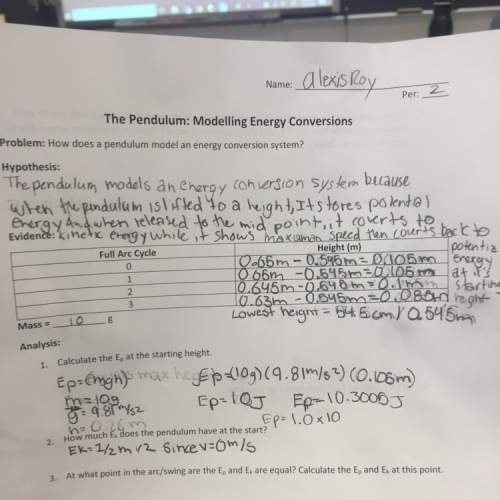
Physics, 01.04.2020 17:38, brandytyler317fries
An earthquake is the shaking and trembling that results from the movement of rock beneath Earth's surface. Earthquakes most commonly occur near tectonic plate boundaries. Why is this most likely the case?In subduction zones, dense pieces of oceanic crust are pulled downward toward the mantle. What is the result of this?

Answers: 3
Other questions on the subject: Physics


Physics, 22.06.2019 04:30, jakiyahporter0817
Asystem containing an ideal gas at a constant pressure of 1.22×10^5 pa gains 2140 j of heat. during the process, the internal energy of the system increases by 2320 j. what is the change in volume of the gas?
Answers: 3

Physics, 22.06.2019 04:30, tayveon122
Light that is polarized along the vertical direction is incident on a sheet of polarizing material. only 96% of the intensity of the light passes through the sheet and strikes a second sheet of polarizing material. no light passes through the second sheet. what angle does the transmission axis of the second sheet make with the vertical?
Answers: 2

Physics, 22.06.2019 04:30, angie249
The pressure increases by 1.0 x 104 n/m^2 for every meter of depth beneath the surface of the ocean. at what depth does the volume of a pyrex (bulk modulus 2.6 x 1010n/m^2) glass cube, 9.8 x 10^−2m on an edge at the ocean's surface, decrease by 7.5 x 10−10m^3? explain the formula beyond this point: p=1.0x10^4, b=2.6x10^10, l=9.8x10^−2, delta v=7.5x10^−10. at some point l needs to be cubed. why p is divided by delta v?
Answers: 2
Do you know the correct answer?
An earthquake is the shaking and trembling that results from the movement of rock beneath Earth's su...
Questions in other subjects:


Chemistry, 23.06.2019 12:20

History, 23.06.2019 12:20













